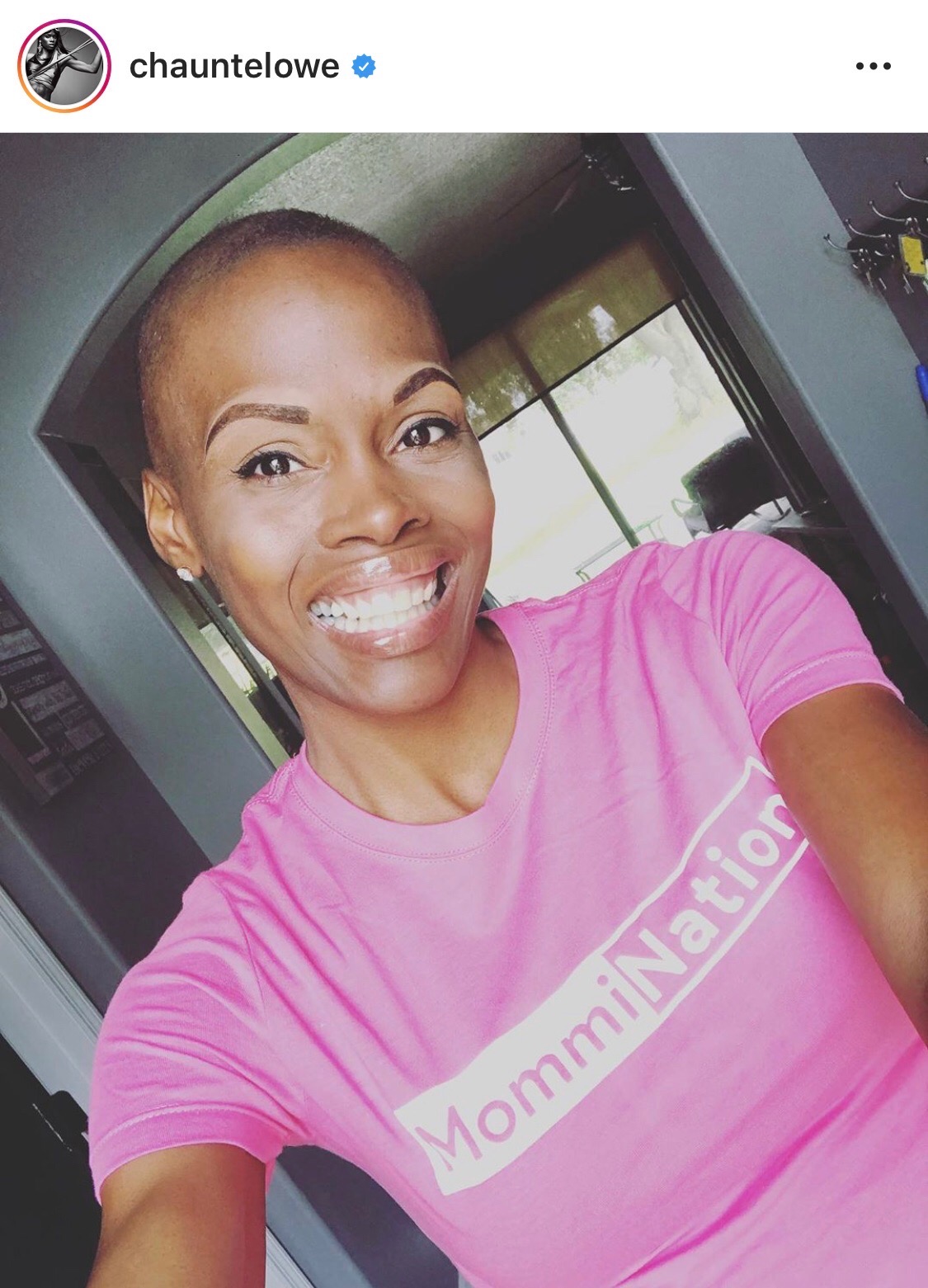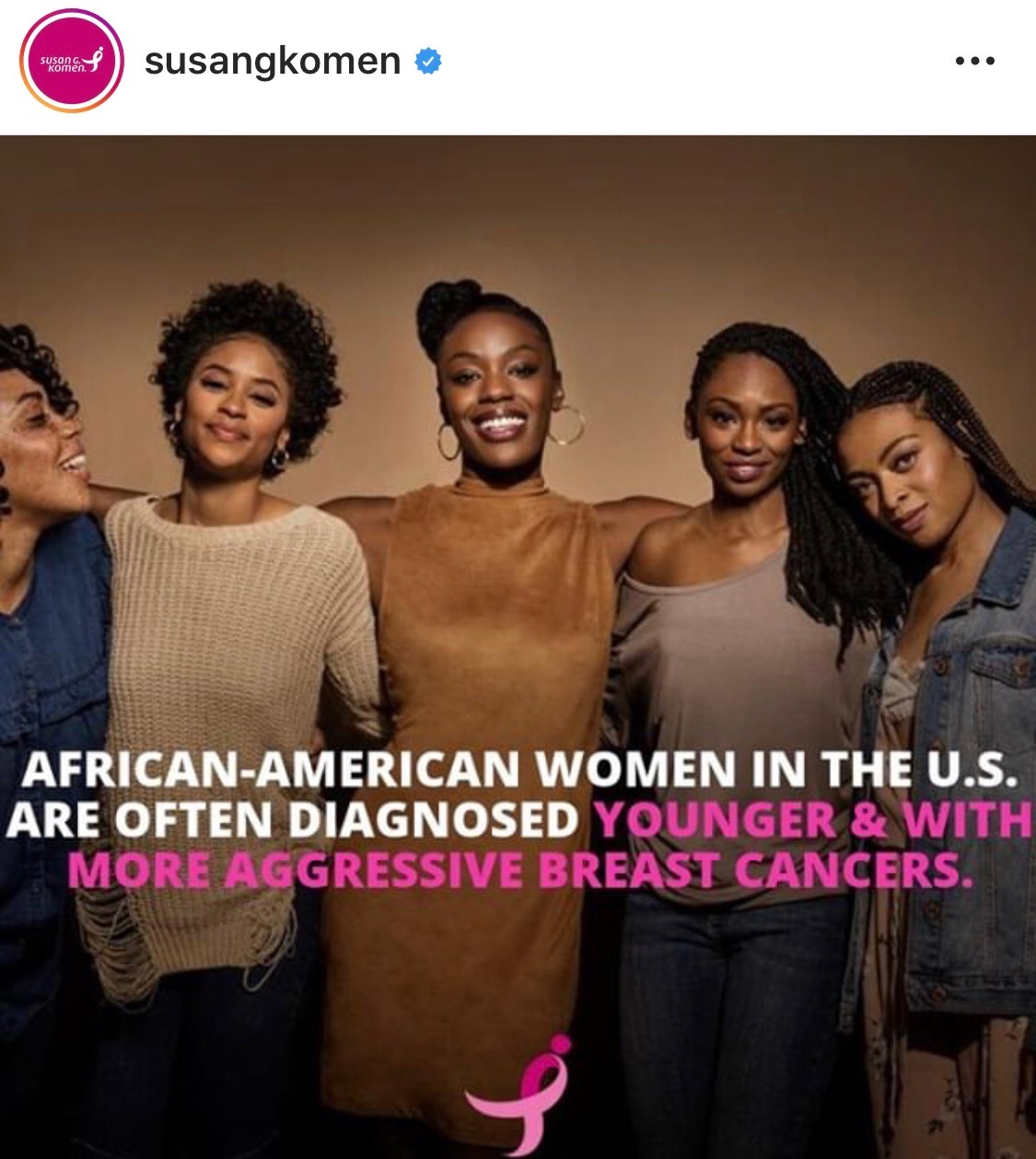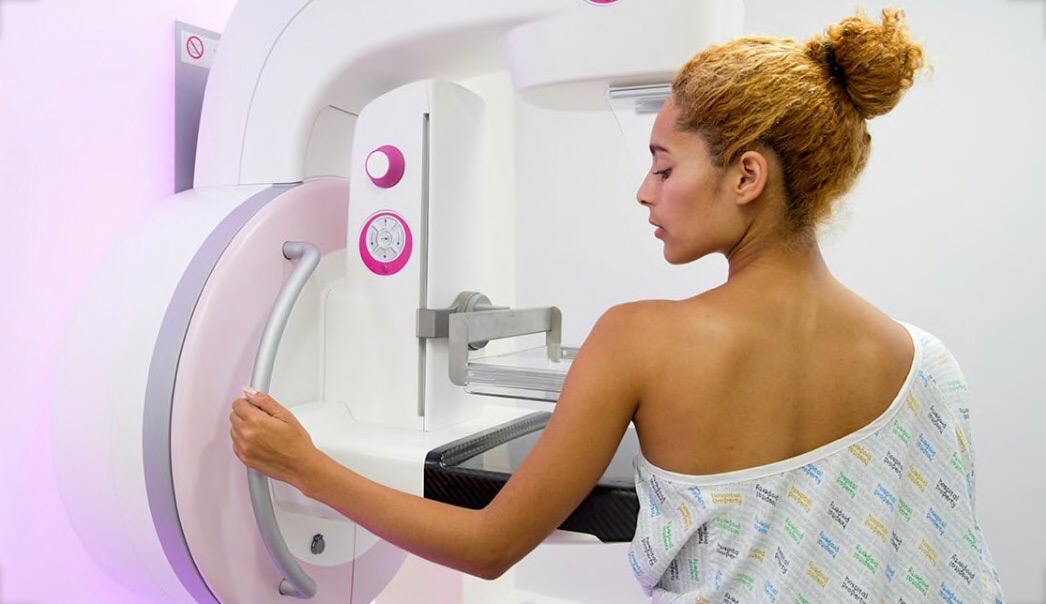The big C. Cancer. Carcinoma. A word no one wants uttered. Yet, it seems as if we hear of someone being diagnosed, fighting, succumbing to and surviving cancer every day. As many of you know,
October is breast cancer awareness month and it’s hard to find someone who hasn’t be affected directly or indirectly by this disease. As an ob/gyn I see countless women who present to me for well-woman exams, vaginal discharge, pregnancy and more. However, none stand out in my mind like the patient that presents with a breast lump. When I enter the room I can sense the fear and see the concern in their eyes, before anything is said. They are thinking, do I have cancer?
Recently, Mommination’s own Chaunte Lowe, a world-class Olympic high jumper, shared her breast cancer diagnosis; reminding us just how close to home the disease can hit. Cancer doesn’t discriminate either.


Let’s talk facts…
- It is estimated that 1:8 women will develop breast cancer in their lifetimes.
- In the United States, it is the second leading cause of cancer related deaths in women.
- Every 13 minutes someone will lose their life to this disease.
- Breast cancer is often diagnosed later and at more advanced stages in Black women. In fact, Black women are more than 40% more likely to die, from the disease, than white women.
- Most cancers occur in women ages


Let’s talk prevention…
The self breast exam (SBE) and clinical breast exam (CBE) have been mainstays in the screening and evaluation of breast disease. I tell my patients all the time that they have been with their bodies longer than I’ve known them. Doing a monthly self breast examination is really a way to determine what’s normal for you. A good time to check is about a week after your period; this allows any cycle related discomforts to resolve. In an ideal world, you won’t detect anything unusual and it will be nothing more than a routine task. However, if you do detect something out of the ordinary, you can go for a check up promptly.
 Mammography is another important step in prevention and detection of early disease. Routine screening starts at age 40. However, for women with a significant family history of breast cancer, screening may begin much earlier. Check with your doctor to determine what’s appropriate for you.
Mammography is another important step in prevention and detection of early disease. Routine screening starts at age 40. However, for women with a significant family history of breast cancer, screening may begin much earlier. Check with your doctor to determine what’s appropriate for you.

 Decrease your alcohol intake. Alcohol consumption can increase your risk of breast cancer. 2-3 alcoholic drinks per day can increase a woman’s risk by 20%. Alcohol can affect how estrogen is metabolized in the body and this can lead to elevated estrogen levels. Higher estrogen levels may increase a woman’s risk of developing breast cancer.
Decrease your alcohol intake. Alcohol consumption can increase your risk of breast cancer. 2-3 alcoholic drinks per day can increase a woman’s risk by 20%. Alcohol can affect how estrogen is metabolized in the body and this can lead to elevated estrogen levels. Higher estrogen levels may increase a woman’s risk of developing breast cancer.
 Lose weight. I know, I know folks get tired of going to the doctor and hearing that they need to lose weight. However, this is one instance in which it can literally save your life! Especially after menopause, being overweight increases your breast cancer risk. The more fat cells present then the more estrogen an be stored. So, keep it moving and stay fit!
Lose weight. I know, I know folks get tired of going to the doctor and hearing that they need to lose weight. However, this is one instance in which it can literally save your life! Especially after menopause, being overweight increases your breast cancer risk. The more fat cells present then the more estrogen an be stored. So, keep it moving and stay fit!
 For the nursing mommas out there, breastfeeding can decrease your risk of breast cancer. So nurse away and hey pumping counts too! On a related note women who have their babies at 35 years old and younger also have a lower risk of breast cancer.
For the nursing mommas out there, breastfeeding can decrease your risk of breast cancer. So nurse away and hey pumping counts too! On a related note women who have their babies at 35 years old and younger also have a lower risk of breast cancer.

When to see your doctor…
- If you are experiencing constant pain in one of both breasts, it’s time to make an appointment. It should be noted that it’s not uncommon for women to have cyclic breast tenderness that coincides with their menstrual cycle.
- Women who find a lump should also be assessed. Now, not all lumps are cancer in fact, many can be benign but it’s better to be on the safe side and get checked out early.
- If you notice dimpling or retraction of the skin overlying your breast tissue, this could be a sign of an underlying cancer. This skin change is known as peau d’orange aka skin of the orange due to its resemblance to an orange peel.
- Some women will experience skin changes, often near the nipple. For some, these changes will appear eczematous but can be a sign of a less common form of breast cancer called Paget’s diseases. Also, skin that appears red, inflamed or irritated could be masking an underlying cancer.
- If you are experiencing nipple discharge, outside of lactation, this may be cause for concern. Surprisingly, not all abnormal discharge means one has cancer. Should you notice bloody, pus like or green nipple discharge, it should be evaluated.
 Your doctor will be able to obtain your clinical history, examine you and determine if any imaging studies are needed. Additionally if you have a strong family history of breast cancer, your doctor can refer you to see a genetic counselor for additional testing. My colleague Dr. Yara Robertson recently shared a diagram on her social media that perfectly depicts when evaluation is necessary!
Your doctor will be able to obtain your clinical history, examine you and determine if any imaging studies are needed. Additionally if you have a strong family history of breast cancer, your doctor can refer you to see a genetic counselor for additional testing. My colleague Dr. Yara Robertson recently shared a diagram on her social media that perfectly depicts when evaluation is necessary!
If you’re concerned, PLEASE go see your doctor. Best case scenario is that your worries result in reassurance. However, if you wait to go in you may be delaying care and when it comes to cancer time is of the essence. Cancers diagnosed at a later stage generally have a worse prognosis. On the brighter side, breast cancer mortality rates have decreased in the past 50 years; this is due to early detection and better treatment options. So ladies, let’s hear it for the girls and get them checked!
As always, thanks for following and be well!
Dr. Kiarra King MD
Board Certified Obstetrician & Gynecologist
Sources:
ACOG.org
Susan G Komen Foundation
Google stock images








Leave a Reply